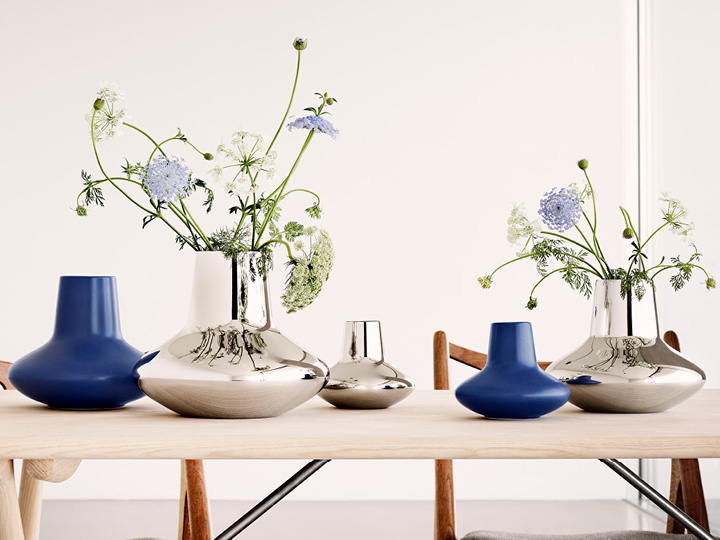
Koppel’s collections for Georg Jensen are the epitome of Scandinavian design and is as relevant today as when the collaboration was formed in 1946.
Image courtesy of: Georg Jensen
Danish designer, Henning Koppel, who was loved by fans of modernism, spent three decades woking at the Georg Jensen Company sketching pieces. Escaping Copenhagen for Sweden during the German occupation of Denmark, Koppel joined the company at age 27.
Studying at Kunstakademiet, the Royal Danish Academy of Fine Arts and the Academie Rancon in Paris, he relied on his background in sculpture and drawings when he started working with silver. From the very beginning, his silverwork was abstract and sculptural… a dramatic shift from anything that had been seen beforehand.
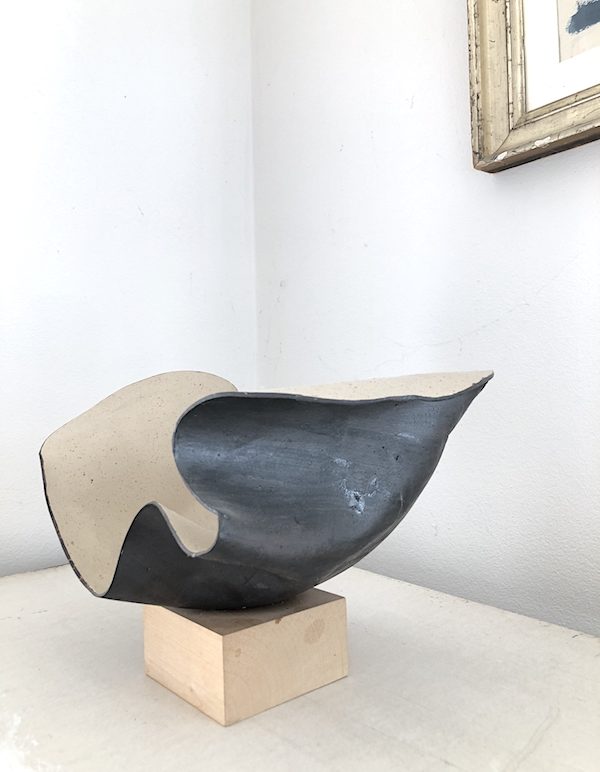
Henning Koppel was the artist who brought relevance to the term, Danish design. Throughout his years, Koppel continued to search for pieces which were both functional and beautiful. He understood that there was no reason to sacrifice form for practicality!
Image courtesy of: Vosgesparis
Keppel’s pieces were a vast departure from everything Georg Jensen had previously designed. The forms were organic and fluid, and tended to resemble the works of artists such as Dali and Leger. A few years into the collaboration, Koppel began designing more sculptural pieces which were a throwback to his years as a student in sculpture.
Perhaps the first to truly understand 3-D, Koppel was known for his precise hollowware, clay models whose forms allow for a compete understanding of a design’s intricacies.
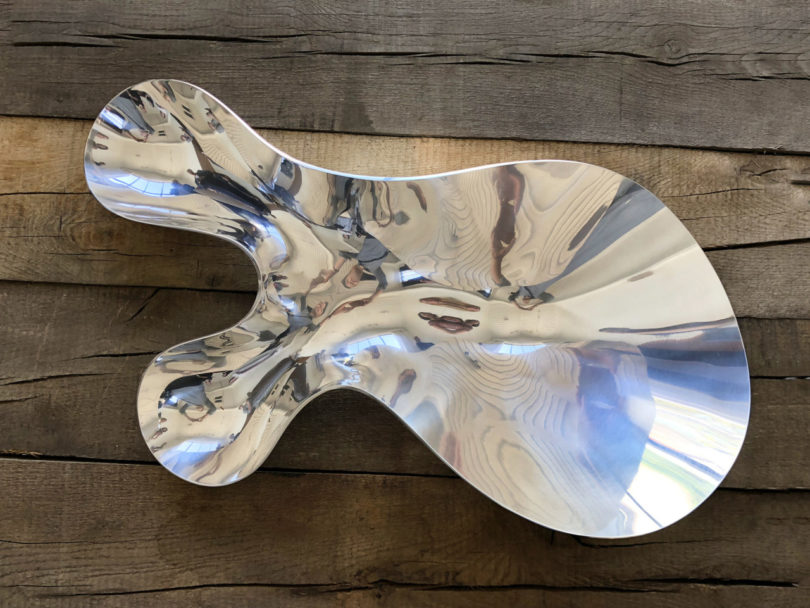
Nicolas Manville, senior vice-president of design at Georg Jensen spoke of the remaking of “1041”. Nicknamed “forensic design”, Manville said, “The only one we’ve ever known to exist was photographed in the hands of a man, so we got dimensions off the picture. But then we realized he was nearly seven feet tall, and we had it wrong”.
Image courtesy of: Design Milk, photographed by: Gregory Han
In honor of Koppel’s 100th year, Georg Jensen is reintroducing a standout piece which Koppel designed- and destroyed- in 1954. “1041” might seem like a strange name, but it references the piece’s numerical place in the Georg Jensen archives. This contemporary, handcrafted piece is made from a 35-pound sheet of silver has been a mystery for many years… the only clue to its existence is a photograph that archivists found two years ago.
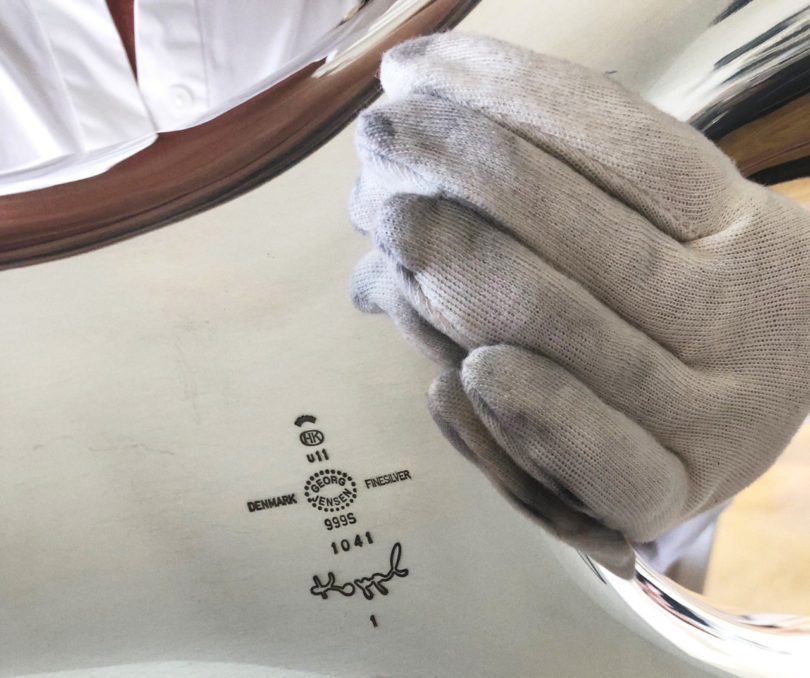
Even though Georg Jensen traditionally uses sterling silver, fine silver (assembled from a purity of 99.9%) was used for this piece. The softer texture is necessary in order to achieve the desired thickness and for crafting the intricate curves.
Image courtesy of: Design Milk, photographed by: Gregory Han
Back in 1954, Koppel was short on patience. After sketching his creation, Koppel attempted to challenge the boundaries of silver crafting. “1041” pushed silver to its limits and Koppel, unsatisfied with the end product, quickly destroyed the model. For more than 60 years, “1041” remained hidden in the company’s design archives.
To recreate this piece became a feat because no dimensions or notes, other than the original, informal sketch and a photograph, were found. Henrik Forster, the silversmith who specializes in Koppel’s pieces, set forth to mimic this unique silver beauty. Using his impressive skill-set, Forster hand-hammered and hand-polished the fine silver and gave it a silky finish. Throughout the year, each “1041” made in 2018 will feature the “Henning Koppel 100” stamp and an imprint of Henning Koppel’s signature, alongside the Georg Jensen logo.
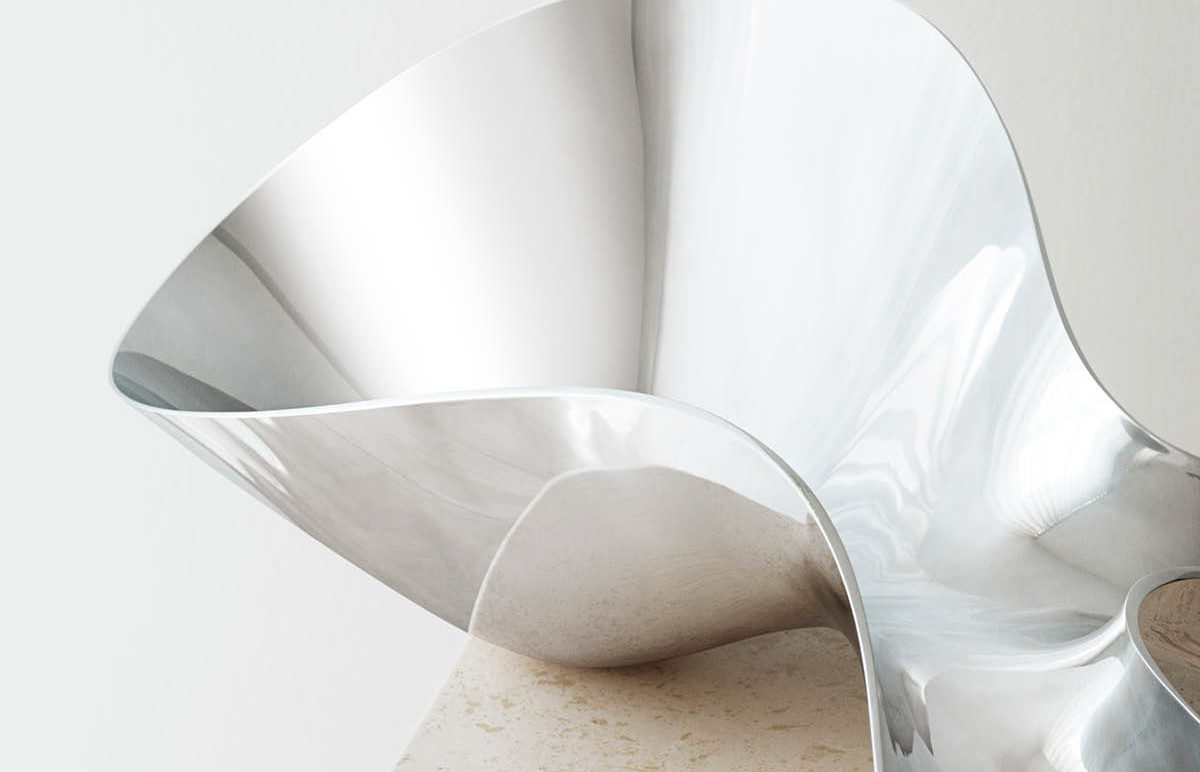
Happy 100th birthday Mr. Koppel!
Image courtesy of: Behance
Had Koppel been privy to the materials available today, mainly a 3-D machine, his beloved “1041” would have come out exactly like what his imagination created. The 3-D software and printing gave the team an unparalleled level of accuracy; one which could not be achieved through manual manipulation of the silver. With no name of its own, we can only imagine that this “body in motion” looks exactly like the vision in Koppel’s dreams.